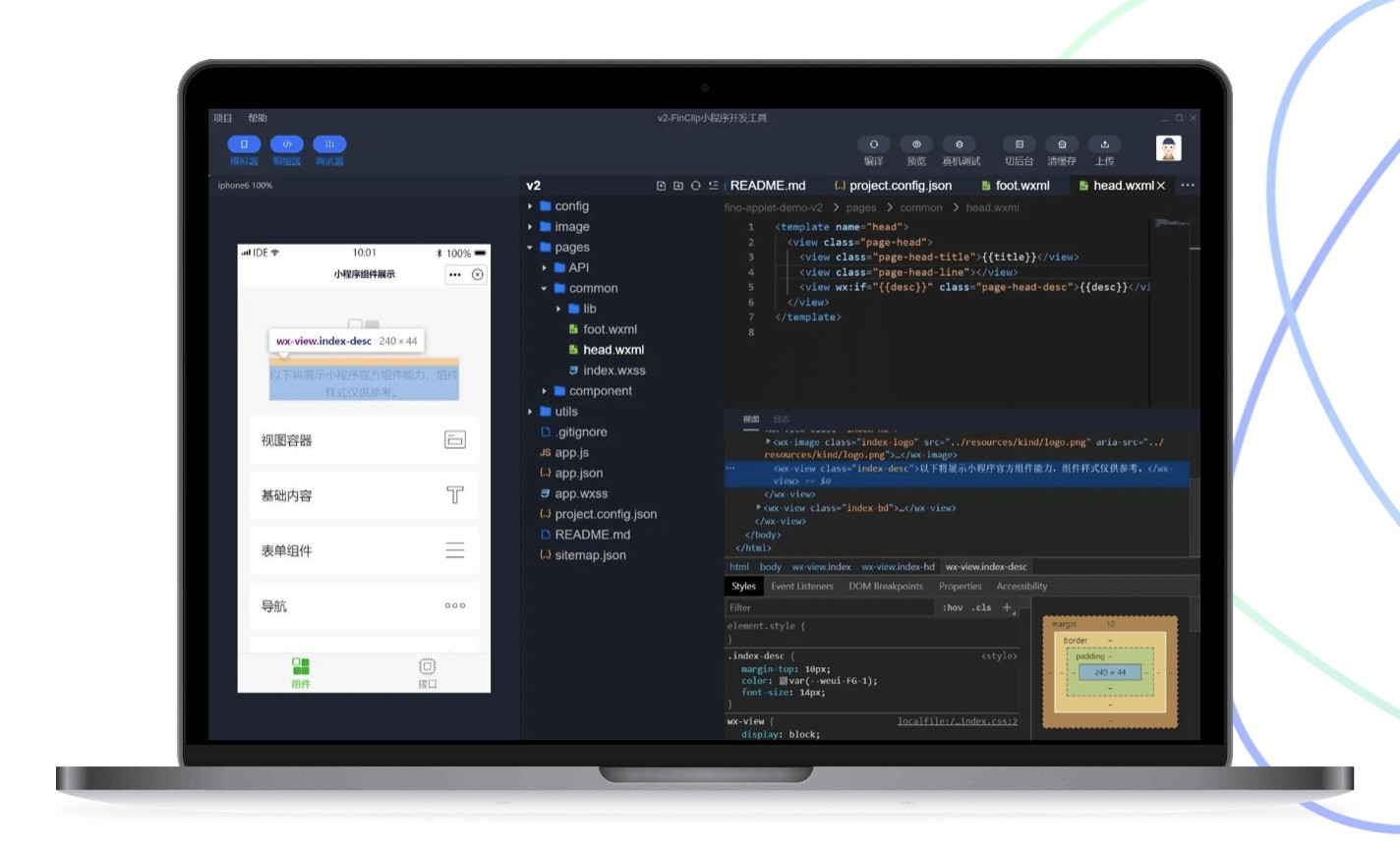洞察纵观鸿蒙next版本,如何凭借FinClip加强小程序的跨平台管理,确保企业在数字化转型中的高效运营和数据安全?
784
2023-02-16

详解springboot集成websocket的两种实现方式

WebSocket跟常规的http协议的区别和优缺点这里大概描述一下
一、websocket与http
http协议是用在应用层的协议,他是基于tcp协议的,http协议建立链接也必须要有三次握手才能发送信息。http链接分为短链接,长链接,短链接是每次请求都要三次握手才能发送自己的信息。即每一个request对应一个response。长链接是在一定的期限内保持链接。保持TCP连接不断开。客户端与服务器通信,必须要有客户端发起然后服务器返回结果。客户端是主动的,服务器是被动的。
WebSocket是HTML5中的协议, 他是为了解决客户端发起多个http请求到服务器资源浏览器必须要经过长时间的轮训问题而生的,他实现了多路复用,他是全双工通信。在webSocket协议下客服端和浏览器可以同时发送信息。
二、HTTP的长连接与websocket的持久连接
HTTP1.1的连接默认使用长连接(persistent connection),
即在一定的期限内保持链接,客户端会需要在短时间内向服务端请求大量的资源,保持TCP连接不断开。客户端与服务器通信,必须要有客户端发起然后服务器返回结果。客户端是主动的,服务器是被动的。
在一个TCP连接上可以传输多个Request/Response消息对,所以本质上还是Request/Response消息对,仍然会造成资源的浪费、实时性不强等问题。
如果不是持续连接,即短连接,那么每个资源都要建立一个新的连接,HTTP底层使用的是TCP,那么每次都要使用三次握手建立TCP连接,即每一个request对应一个response,将造成极大的资源浪费。
长轮询,即客户端发送一个超时时间很长的Request,服务器hold住这个连接,在有新数据到达时返回Response
websocket的持久连接 只需建立一次Request/Response消息对,之后都是TCP连接,避免了需要多次建立Request/Response消息对而产生的冗余头部信息。
Websocket只需要一次HTTP握手,所以说整个通讯过程是建立在一次连接/状态中,而且websocket可以实现服务端主动联系客户端,这是http做不到的。
springboot集成websocket的不同实现方式:
pom添加依赖
因涉及到js连接服务端,所以也写了对应的html,这里集成下thymeleaf模板,前后分离的项目这一块全都是前端做的
配置文件:
server:
port: 8885
#添加Thymeleaf配置
thymeleaf:
cache: false
prefix: classpath:/templates/
suffix: .html
mode: HTML5
encoding: UTF-8
content-type: text/html
1:自定义WebSocketServer,使用底层的websocket方法,提供对应的onOpen、onClose、onMessage、onError方法
1.1:添加webSocketConfig配置类
/**
* 开启WebSocket支持
* Created by huiyunfei on 2019/5/31.
*/
@Configuration
public class WebSocketConfig {
@Bean
public ServerEndpointExporter serverEndpointExporter() {
return new ServerEndpointExporter();
}
}
1.2:添加webSocketServer服务端类
package com.example.admin.web;
/**
* Created by huiyunfei on 2019/5/31.
*/
@ServerEndpoint("/websocket/{sid}")
@Component
@Slf4j
public class WebSocketServer {
//静态变量,用来记录当前在线连接数。应该把它设计成线程安全的。
private static int onlineCount = 0;
//concurrent包的线程安全Set,用来存放每个客户端对应的MyWebSocket对象。
private static CopyOnWriteArraySet
//与某个客户端的连接会话,需要通过它来给客户端发送数据
private Session session;
//接收sid
private String sid="";
*/
/**
* 连接建立成功调用的方法*//*
@OnOpen
public void onOpen(Session session, @PathParam("sid") String sid) {
this.session = session;
webSocketSet.add(this); //加入set中
addOnlineCount(); //在线数加1
log.info("有新窗口开始监听:"+sid+",当前在线人数为" + getOnlineCount());
this.sid=sid;
try {
sendMessage("连接成功");
} catch (IOException e) {
log.error("websocket IO异常");
}
}
*/
/**
* 连接关闭调用的方法
*//*
@OnClose
public void onClose() {
webSocketSet.remove(this); //从set中删除
subOnlineCount(); //在线数减1
log.info("有一连接关闭!当前在线人数为" + getOnlineCount());
}
*/
/**
* 收到客户端消息后调用的方法
*
* @param message 客户端发送过来的消息*//*
@OnMessage
public void onMessage(String message, Session session) {
log.info("收到来自窗口"+sid+"的信息:"+message);
//群发消息
for (WebSocketServer item : webSocketSet) {
try {
item.sendMessage(message);
} catch (IOException e) {
e.printStackTrace();
}
}
}
*/
/**
*
* @param session
* @param error
*//*
@OnError
public void onError(Session session, Throwable error) {
log.error("发生错误");
error.printStackTrace();
}
*/
/**
* 实现服务器主动推送
*//*
public void sendMessage(String message) throws IOException {
this.session.getBasicRemote().sendText(message);
}
*/
/**
* 群发自定义消息
* *//*
public static void sendInfo(String message,@PathParam("sid") String sid) throws IOException {
log.info("推送消息到窗口"+sid+",推送内容:"+message);
for (WebSocketServer item : webSocketSet) {
try {
//这里可以设定只推送给这个sid的,为null则全部推送
if(sid==null) {
item.sendMessage(message);
}else if(item.sid.equals(sid)){
item.sendMessage(message);
}
} catch (IOException e) {
continue;
}
}
}
public static synchronized int getOnlineCount() {
return onlineCount;
}
public static synchronized void addOnlineCount() {
WebSocketServer.onlineCount++;
}
public static synchronized void subOnlineCount() {
WebSocketServer.onlineCount--;
}
public static CopyOnWriteArraySet
return webSocketSet;
}
}
1.3:添加对应的controller
@Controller
@RequestMapping("/system")
public class SystemController {
//页面请求
@GetMapping("/index/{userId}")
public ModelAndView socket(@PathVariable String userId) {
ModelAndView mav=new ModelAndView("/socket1");
mav.addObject("userId", userId);
return mav;
}
//推送数据接口
@ResponseBody
@RequestMapping("/socket/push/{cid}")
public Map pushToWeb(@PathVariable String cid, String message) {
Map result = new HashMap();
try {
WebSocketServer.sendInfo(message,cid);
result.put("code", 200);
result.put("msg", "success");
} catch (IOException e) {
e.printStackTrace();
}
return result;
}
1.4:提供socket1.html页面
hello world!
总结:
浏览器debug访问 localhost:8885/system/index/1跳转到socket1.html,js自动连接server并传递cid到服务端,服务端对应的推送消息到客户端页面(cid区分不同的请求,server里提供的有群发消息方法)
2.1:基于STOMP协议的WebSocket
使用STOMP的好处在于,它完全就是一种消息队列模式,你可以使用生产者与消费者的思想来认识它,发送消息的是生产者,接收消息的是消费者。而消费者可以通过订阅不同的destination,来获得不同的推送消息,不需要开发人员去管理这些订阅与推送目的地之前的关系,spring官网就有一个简单的spring-boot的stomp-demo,如果是基于springboot,大家可以根据spring上面的教程试着去写一个简单的demo。
提供websocketConfig配置类
/**
* @Description:
registerStompEndpoints(StompEndpointRegistry registry)
configureMessageBroker(MessageBrokerRegistry config)
这个方法的作用是定义消息代理,通俗一点讲就是设置消息连接请求的各种规范信息。
registry.enableSimpleBroker("/topic")表示客户端订阅地址的前缀信息,也就是客户端接收服务端消息的地址的前缀信息(比较绕,看完整个例子,大概就能明白了)
registry.setApplicationDestinationPrefixes("/app")指服务端接收地址的前缀,意思就是说客户端给服务端发消息的地址的前缀
* @Author:hui.yunfei@qq.com
* @Date: 2019/5/31
*/
@Configuration
@EnableWebSocketMessageBroker
public class WebSocketConfig extends AbstractWebSocketMessageBrokerConfigurer {
// 这个方法的作用是添加一个服务端点,来接收客户端的连接。
// registry.addEndpoint("/socket")表示添加了一个/socket端点,客户端就可以通过这个端点来进行连接。
// withSockJS()的作用是开启SockJS支持,
@Override
public void registerStompEndpoints(StompEndpointRegistry registry) {
registry.addEndpoint("/socket").withSockJS();
}
@Override
public void configureMessageBroker(MessageBrokerRegistry registry) {
//表示客户端订阅地址的前缀信息,也就是客户端接收服务端消息的地址的前缀信息
registry.enableSimpleBroker("/topic");
//指服务端接收地址的前缀,意思就是说客户端给服务端发消息的地址的前缀
registry.setApplicationDestinationPrefixes("/app");
}
}
2.2:controller提供对应请求的接口
//页面请求
@GetMapping("/socket2")
public ModelAndView socket2() {//@PathVariable String userId
ModelAndView mav=new ModelAndView("html/socket2");
//mav.addObject("userId", userId);
return mav;
}
/**
* @Description:这个方法是接收客户端发送功公告的WebSocket请求,使用的是@MessageMapping
* @Author:hui.yunfei@qq.com
* @Date: 2019/5/31
*/
@MessageMapping("/change-notice")//客户端访问服务端的时候config中配置的服务端接收前缀也要加上 例:/app/change-notice
@SendTo("/topic/notice")//config中配置的订阅前缀记得要加上
public CustomMessage greeting(CustomMessage message){
System.out.println("服务端接收到消息:"+message.toString());
//我们使用这个方法进行消息的转发发送!
//this.simpMessagingTemplate.convertAndSend("/topic/notice", value);(可以使用定时器定时发送消息到客户端)
// @Scheduled(fixedDelay = 1000L)
// public void time() {
// messagingTemplate.convertAndSend("/system/time", new Date().toString());
// }
//也可以使用sendTo发送
return message;
}
2.3:提供socket2.html
2.4:对应的js引用可以去网上-
2.5:浏览器debug访问localhost:8885/system/socket2,点击连接连接到服务器,数据内容可以推送到服务器以及服务器消息回推。
2.6:实现前端和服务端的轮训可以页面Ajax轮训也可以后端添加定时器
@Component
@EnableScheduling
public class TimeTask {
private static Logger logger = LoggerFactory.getLogger(TimeTask.class);
@Scheduled(cron = "0/20 * * * * ?")
public void test(){
System.err.println("********* 定时任务执行 **************");
CopyOnWriteArraySet
WebSocketServer.getWebSocketSet();
int i = 0 ;
webSocketSet.forEach(c->{
try {
c.sendMessage(" 定时发送 " + new Date().toLocaleString());
} catch (IOException e) {
e.printStackTrace();
}
});
System.err.println("/n 定时任务完成.......");
}
}
代码在https://github.com/huiyunfei/spring-cloud.git 的admin项目里
基于STOMP协议的广播模式和点对点模式消息推送可参考:
https://cnblogs.com/hhhshct/p/8849449.html
https://cnblogs.com/jmcui/p/8999998.html
版权声明:本文内容由网络用户投稿,版权归原作者所有,本站不拥有其著作权,亦不承担相应法律责任。如果您发现本站中有涉嫌抄袭或描述失实的内容,请联系我们jiasou666@gmail.com 处理,核实后本网站将在24小时内删除侵权内容。
发表评论
暂时没有评论,来抢沙发吧~